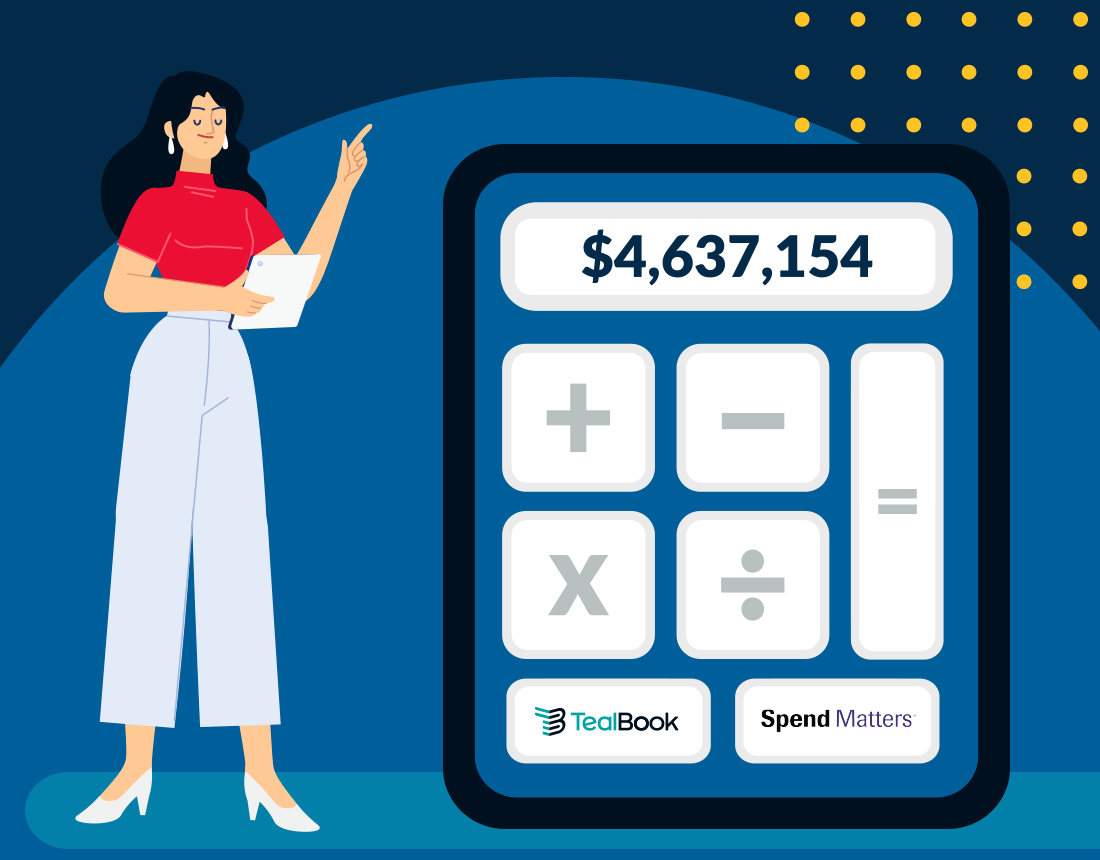You open your email, and there it is. Your procurement manager just sent the long-awaited requirements for the upcoming analytic tool RFP. Finally! You’ve been waiting to implement something like this for years. You’ve got one chance to build a solid foundation for your organization.
Last year, your team implemented an eProcurement tool that robbed your team’s time, energy, and focus. The tool is great, but your team is spending so much time validating suppliers and verifying data that you can’t get to a streamlined process, increasing cycle times and causing you to miss out on payment term-related benefits. You begin your research and discover hundreds of analytic tools that seem to all hit your unique requirements. Are you going to sit through a hundred demos? Probably not; you don’t have the time.
So, let’s talk ROI. This is where the rubber hits the road. To ensure stakeholder approval and a successful contract cycle, it all comes back to risk mitigation. We aren’t used to tracking metrics like adoption rates, usability, time saved. These were unheard of 10 years ago, but organizations are seeing the direct correlation from time saved to cost savings in 2022.
Ensuring the success of the exercise, value, and return must encompass way more than cost savings.
Return on investment is one of the most critical pieces in determining how profitable a particular growth strategy or investment will be. At a high level, procurement ROI is measured by comparing the procurement function’s costs with the total financial and operational savings it generates. However, it’s not as easy to figure out those numbers across every department. While traditional ROI is typically based on a department’s revenue, determining procurement’s ROI takes a few more factors into consideration.
In order to determine if your procurement process is efficient and helps meet goals, it’s essential to know how you can measure procurement ROI, recognize the inefficiencies within current tactics, and search for better ways to determine the figures that affect your overall plan.

Traditional methods used to calculate procurement ROI
If you asked a procurement professional how they calculate ROI each year, they would likely tell you that they divide their annual cost savings by their annual cost of procurement. While this number is meant to determine the efficiency of procurement processes within your organization, there are several other factors that are often considered when figuring this number.
Key areas to factor in
Traditionally, teams look at these metrics when trying to determine procurement ROI.
The length of each cycle time
How much time passes between a purchase order being placed versus when the organization is actually paid? If there are significant delays between the two, teams may look for ways to shorten the cycle time and reduce inefficiencies.
The total cost per invoice
How much did it cost your team to produce and complete paper and digital invoices? Many organizations tend to favor digital invoices to reduce mailing costs and allow for quick updates in case of changes.
The total cost per payment
Were there a large number of payments received via paper check? By taking steps to reduce the cost of payment types, organizations can attempt to increase ROI.
The percentage of catalog compliance
How much time are team members spending finding particular suppliers? This tends to take up a bulk of employees’ time, but can be difficult to combat without better supplier data.
Inefficiencies with current methods
While all the factors listed above are important metrics to track, they also possess their own set of problems that can allow for added inefficiencies.
For starters, using these factors on their own to determine ROI doesn’t necessarily allow for a holistic view of your procurement process or its efficiency. While tracking the cost per invoice with each supplier can help outline where source-to-pay methods can be improved, it doesn’t take into account the time needed to find the correct email address to send an invoice to. Additionally, while the time employees spend searching for viable suppliers is definitely a vital factor to track, the action does not offer a solution if your team is wrapped up in the task for hours.
These current methods also don’t factor in the cost of poor supplier data—which is significant, according to a survey conducted by Deloitte—and the impact that improving your supplier data can have on procurement ROI. At this point, you’re likely wishing there was a better way to calculate procurement ROI that could provide you with data-proven numbers you can bring to the board. Well, there is now.
Introducing the ROI calculator
TealBook has partnered with Spend Matters to create a procurement ROI calculator that allows buy-side professionals to build a business case to improve foundational supplier data. In order to create this calculator, we considered customer feedback, analyzed benchmark data, and collaborated with experts with Spend Matters.
While TealBook works with a variety of use cases within procurement, the ROI calculator is specifically designed to measure financial and operational savings that are made possible by our autonomous supplier data.
How the calculator works
The calculator model uses a combination of TealBook user-provided drivers, a set of publicly-available data, and estimates based on customer and partner discussions, considered alongside other assumptions. These estimates were checked and aggregated by Spend Matters, a trusted provider of technology-agnostic analysis in the procurement industry.
It takes several inputs into account to determine your ROI including:
- Invoice and spend related inputs
- Sourcing project-related inputs
- Cost related inputs
- Supplier-related inputs
After receiving these inputs, which are customizable depending on your needs, you are given several categorized outputs which include:
- Process efficiency
- Cost avoidance and loss prevention
- Sourcing
- Working capital and payment terms-related benefits
- Compliance cost avoidance
We encourage you to read the full ROI Calculator white paper to get a wider scope of the calculator’s capabilities and learn more about how TealBook and Spend Matters arrived at the model.
Build a business case for clean supplier data
While the calculator is not to assess customized opportunities, it can provide you with estimates of procurement ROI that are holistic and defensible.
We encourage you to try the calculator for yourself so you can begin building a business for clean supplier data and unleash procurement possibilities! Go to the calculator here.

